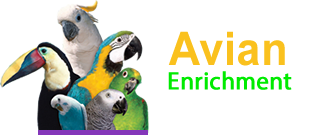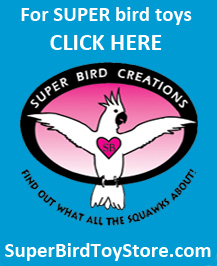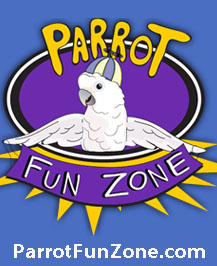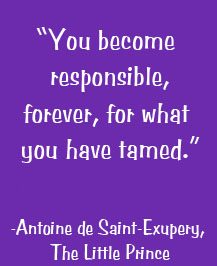 Unknowingly, you may have toxic plants around your household which present a serious danger to your bird. Parrots instinctually enjoy chewing and shredding plants. If you allow your parrot unsupervised access to your home, you should take steps to make sure toxic plants are removed from your home.
Unknowingly, you may have toxic plants around your household which present a serious danger to your bird. Parrots instinctually enjoy chewing and shredding plants. If you allow your parrot unsupervised access to your home, you should take steps to make sure toxic plants are removed from your home.
The following is a partial list of potentially harmful indoor and outdoor plants.
| Acokanthera | Firethorn/Pyracantha | Oak (acorns, foliage) |
| Alacia | Flame Tree | Olaxis |
| Amaryllis (bulbs) | Flamingo Flower | Oleander |
| American Yew | Fly Agaric Mushroom/Deadly Amanita | Parsley |
| Angel’s Trumpet |
Four O’Clock |
Peach (leaves, twigs, pits) |
| Apple (seeds) | Foxglove (leaves, seeds) |
Peanuts (if raw) |
| Apricot (pit, bark) | Geranium | Peace Lily |
| Arrowhead Vine | Glory Bean | Pear (seeds) |
| Autumn Crocus/Meadow Saffron | Glottidium | Pencil Tree |
| Avocado | Golden Chain/Laburnum | Peony (flowers, leaves) |
| Azalea (leaves) | Ground Cherry | Periwinkle |
| Balsam Pear (seeds, outer rind of fruit) | Heliotrope | Peyote |
| Belladonna | Hemlock (including water the plant is in) | Philodendron |
| Baneberry (berries, root) |
Henbane |
Pigweed |
| Beans (all types if uncooked) | Holly (berries, leaves) | Pikeweed |
| Betal Nut Palm |
Honey Locust |
Pine needles (berries) |
| Bird of Paradise (seeds & flowers) | Honeysuckle |
Plum (leaves, seeds) |
| Birch | Horse Chestnut/Buckeye (nuts, twigs) | Poinsettia |
| Bishop's Weed | Horse Nettle | Poison Hemlock |
| Bittersweet Nightshade |
Horsetail |
Poison Ivy (sap) |
| Black Locust (bark, sprouts, foliage) | Hyacinth (bulbs) | Poison Oak (sap) |
| Bleeding Heart/Dutchman’s Breeches | Hydrangea (flower bud) | Poison Sumac |
| Bloodroot | Indian Licorice Bean | Pokeweed/Inkberry (leaves, roots, and berries) |
| Blue-green algae (some forms toxic) | Indian Turnip/Jack-in-the-Pulpit | Poppy |
| Boxwood (leaves, stems) |
Iris/Blue Flag (bulbs) |
Potato (eyes, new shoots, stems, leaves, green skin) |
| Bracken Fern | Ivy |
Pothos |
| Broomcorn Grass | Jack-in-the-Pulpit | Primrose |
| Buckthorn (fruit, bark) | Japanese Yew (needles, seeds) | Privet |
| Burdock | Java Bean (lima bean - uncooked) | Pyracantha |
| Buttercup (sap, bulbs) |
Jerusalem Cherry |
Ragwort |
| Caladium (leaves) | Jessamine |
Rain Tree |
| Calla Lily | Jimsonweed | Ranunculus/Buttercup |
| Candelabra Tree | Johnson Grass | Rattlebox |
| Cardinal Flower | Jonquil | Red Maple |
| Castor Bean (also castor oil, leaves) |
Juniper (needles, stems, berries) |
Rhododendron |
| Catclaw Acacia |
Jerusalem Cherry (berries) |
Rhubarb (leaves) |
| Chalice Vine/Trumpet vine | Kentucky Coffee Tree | Rosary Peas/Indian Licorice (seeds) |
| Cherry Tree (bark, twigs, leaves, pits) |
Lantana (immature berries) |
Sage |
| Chinaberry Tree | Larkspur | Sandbox Tree |
| Christmas Candle (sap) |
Laurel |
Scarlet Runner Beans |
| Christmas Cherry | Lily of the Valley | Shamrock plant |
| Chrysanthemum |
Lobelia |
Skunk Cabbage |
| Clematis/Virginia Bower | Locoweed | Snap Dragon |
| Coffee | Locusts, Black/Honey |
Snowdrop |
| Coral Plant (seeds) | Lords and Ladies/Cuckoopint | Snowflake |
| Coriander | Lupines/Bluebonnet | Snow on the Mountain/Ghostweed |
| Cowslip/Marsh Marigold | Malanga | Sorghum Grass |
| Crown of Thorns |
Mandrake |
Sorrel |
| Croton |
Mango Tree (wood, leaves, rind - fruit is safe) |
Spurges |
|
Cyad or Sago Cyas |
Marijuana/Hemp (leaves) |
Star of Bethlehem |
| Daffodil (bulbs) | Mayapple (fruit is safe) | Sudan Grass |
| Daphne (berries) | Mescal Beans (seeds) | Sweet Pea (seeds, fruit) |
| Datura (berries) | Mexican Poppy | Tansy Ragwort |
| Deadly Amanita | Milkweed | Tobacco |
| Death Camas | Mistletoe (berries) |
Tomato plant |
|
Delphinium |
Mock Orange (fruit) | Umbrella Plant |
| Dieffenbachia | Monkshood/Aconite (leaves, root) | Vetches |
| Eggplant (fruit okay) | Monstera | Virginia Creeper |
| Elderberry (leaves) | Moonseed | Water Hemlock |
| Elephants Ear (leaves, stem) | Morning Glory | Wattle |
| English Ivy (berries, leaves) | Mountain Laurel | Waxberry |
| English Yew | Mushrooms (many varieties) | Weeping Fig |
| Ergot |
Myrtle |
Western Yew |
| Euonymus/Spindle Tree | Narcissus (bulbs) | White Cedar |
| European Pennyroyal |
Nettles |
Wisteria |
| False Hellebore | Nightshade | Yellow Jasmine |
| False Henbane | Nutmeg | Yew (All types) |
Sources: American Medical Association Handbook of Poisonous and Injurious Plants; Gallerstein, Gary A., DVM, 2003, The Complete Bird Owner's Handbook; R. Dean Axelson, Caring For Your Pet Bird; and various internet sources.
If you have a question regarding the safety of a specific plant ask your veterinarian, local green house, or the Animal Poison Control Center (AAPCC).
Click here for a list of Safe Plants.



















































































































































Comments powered by CComment